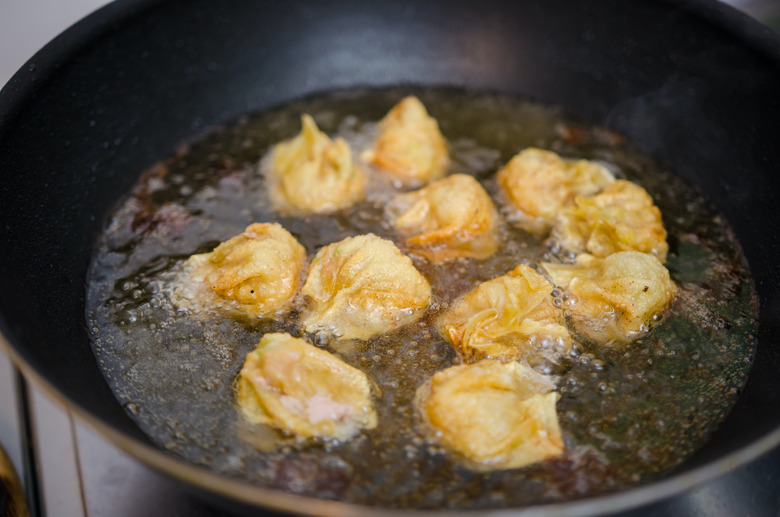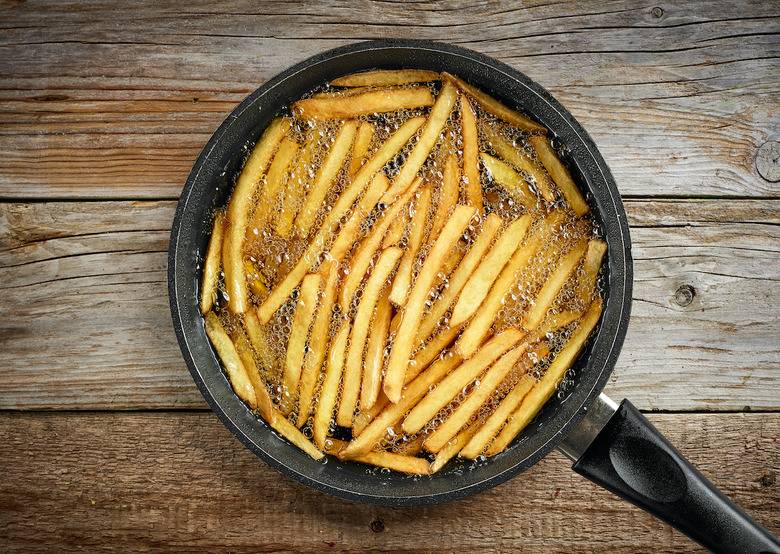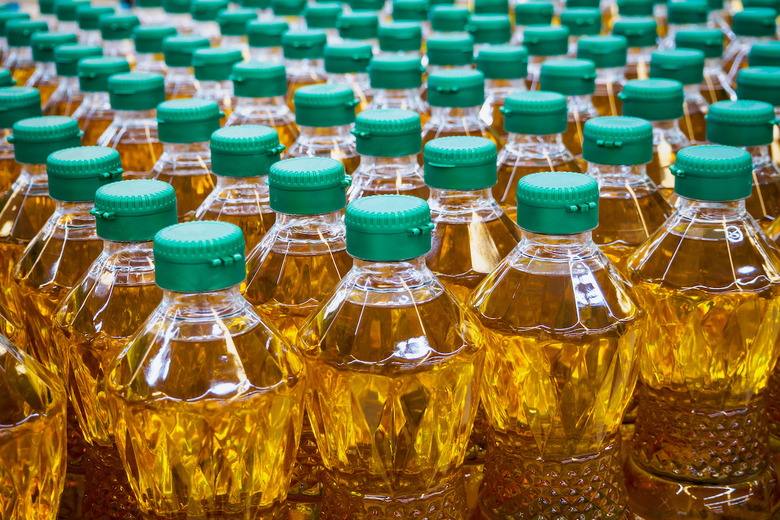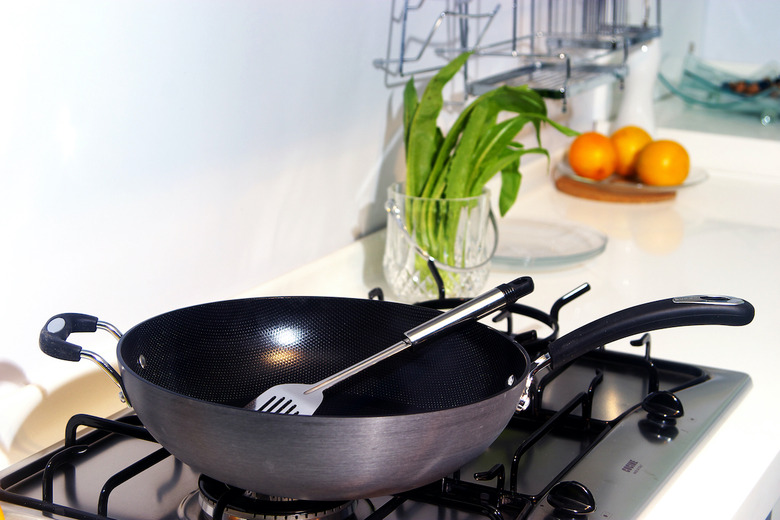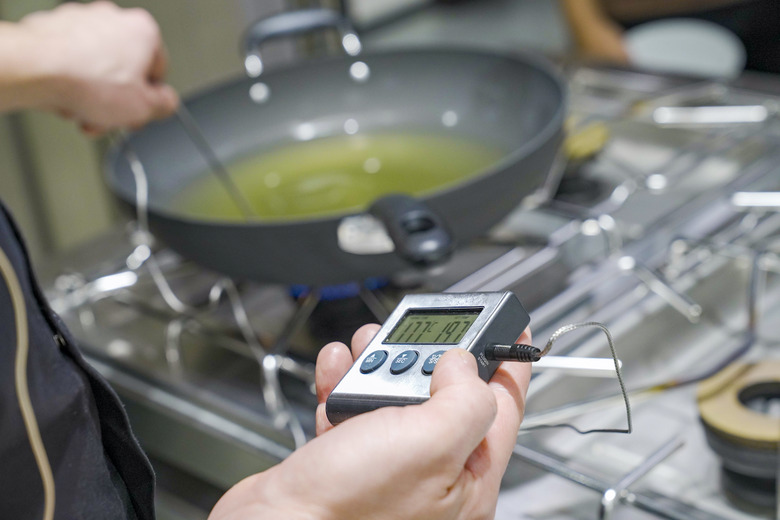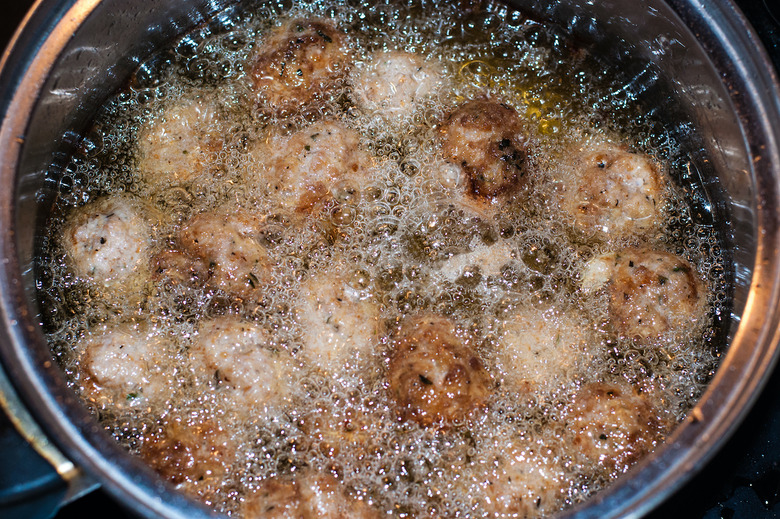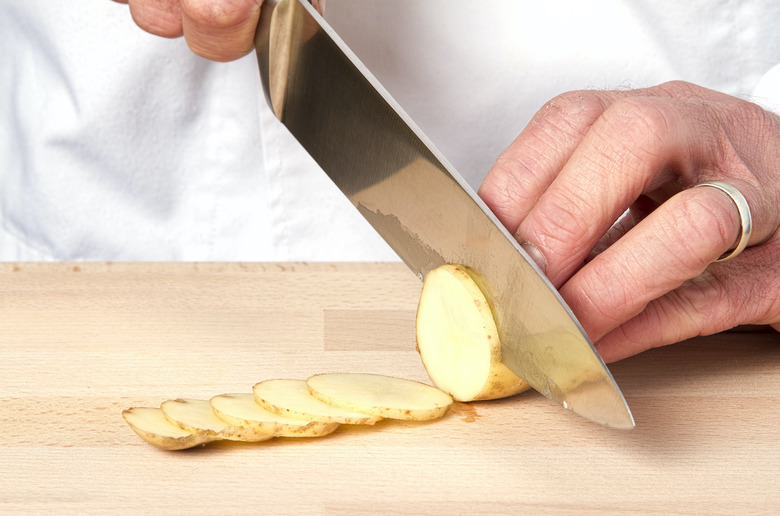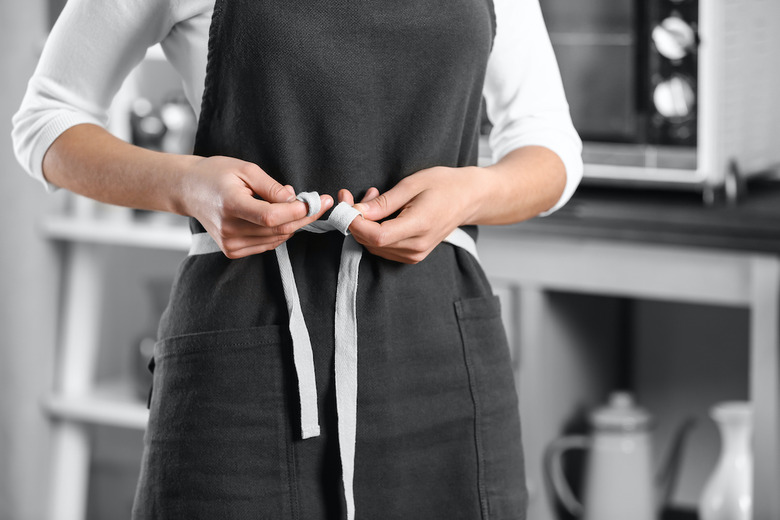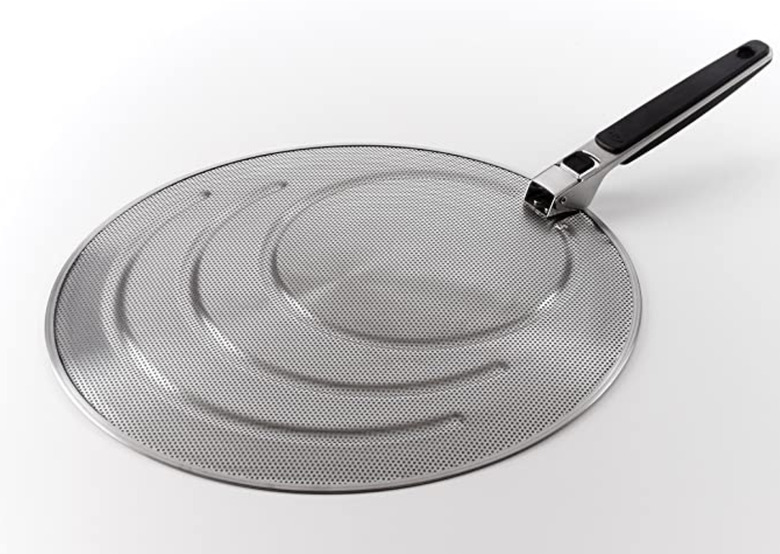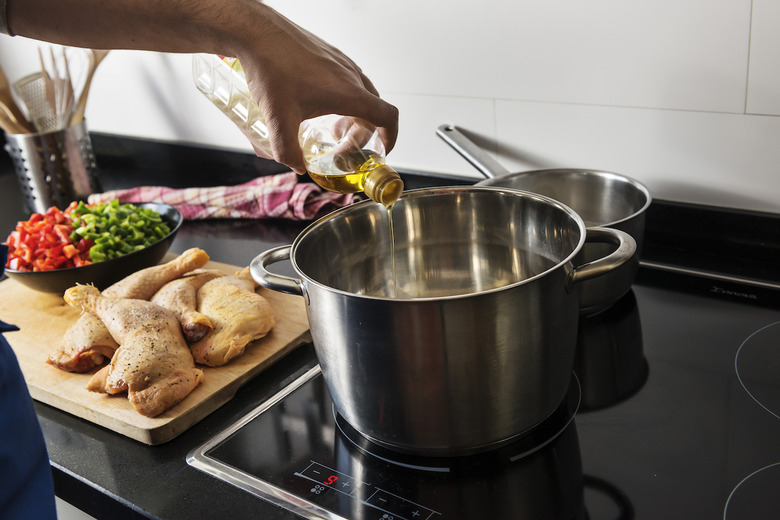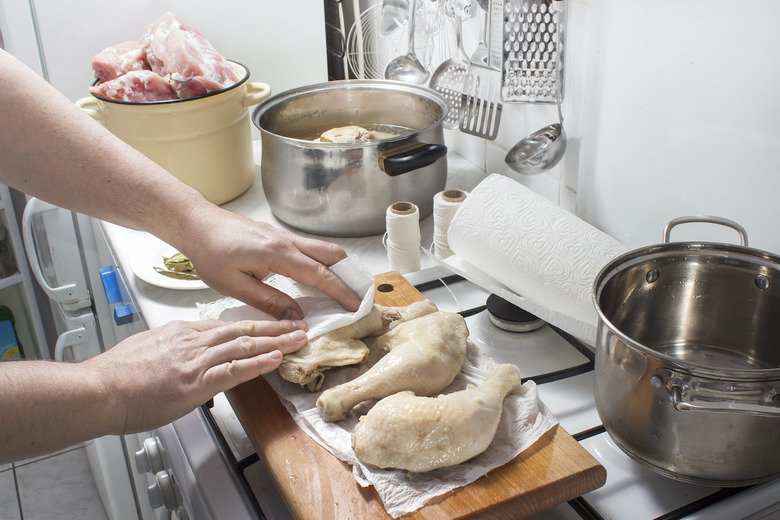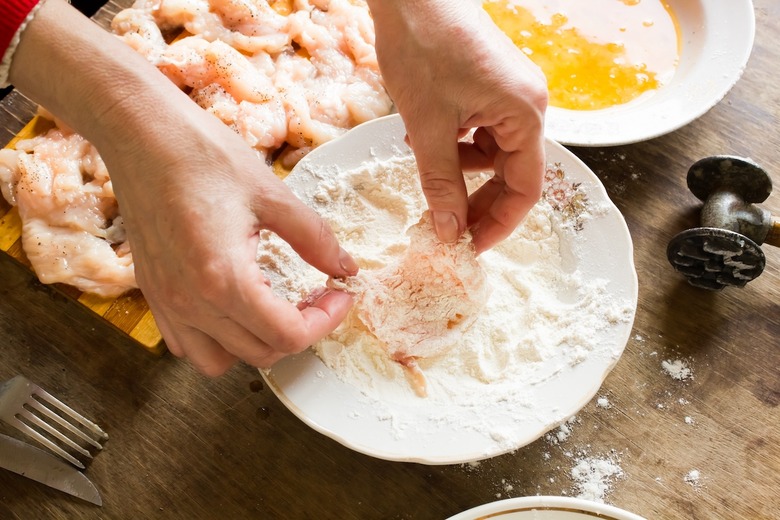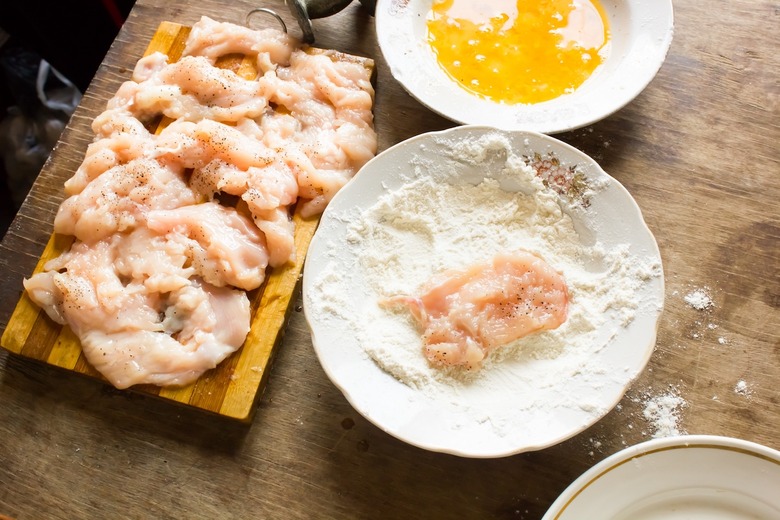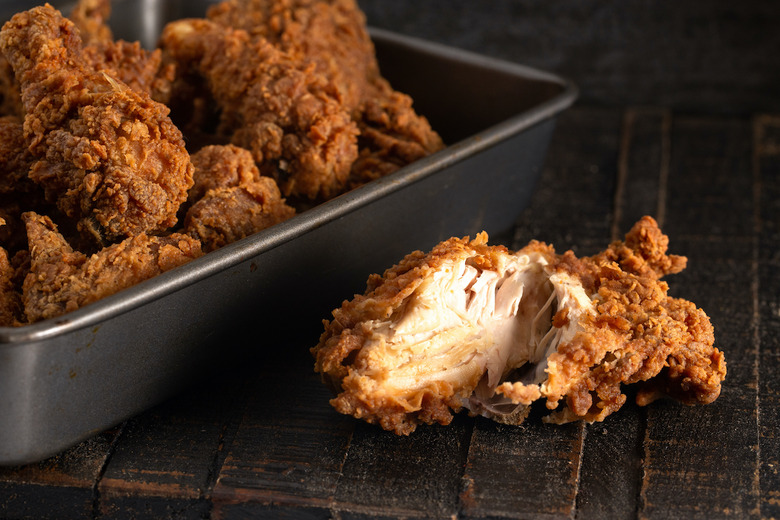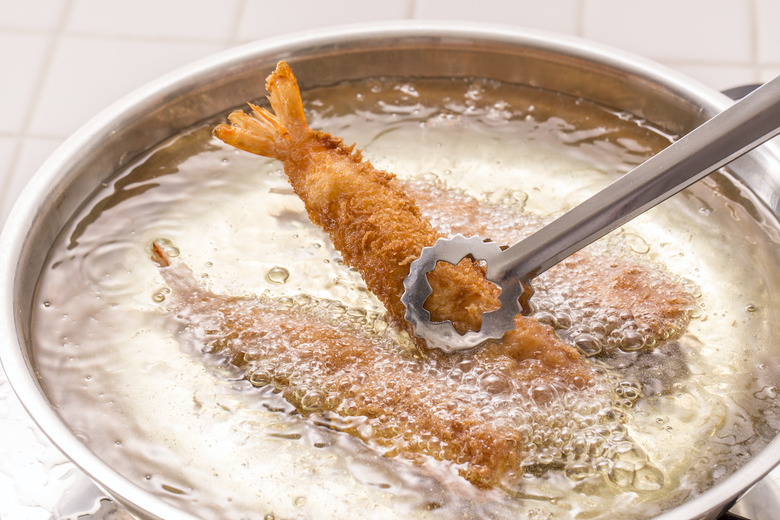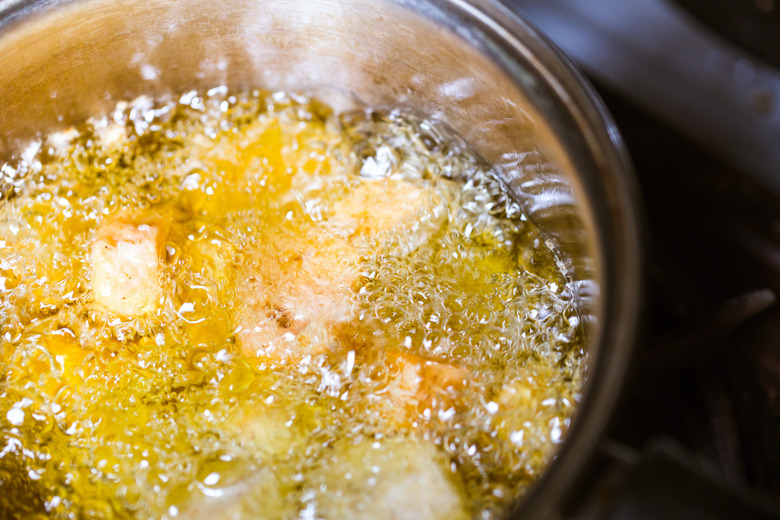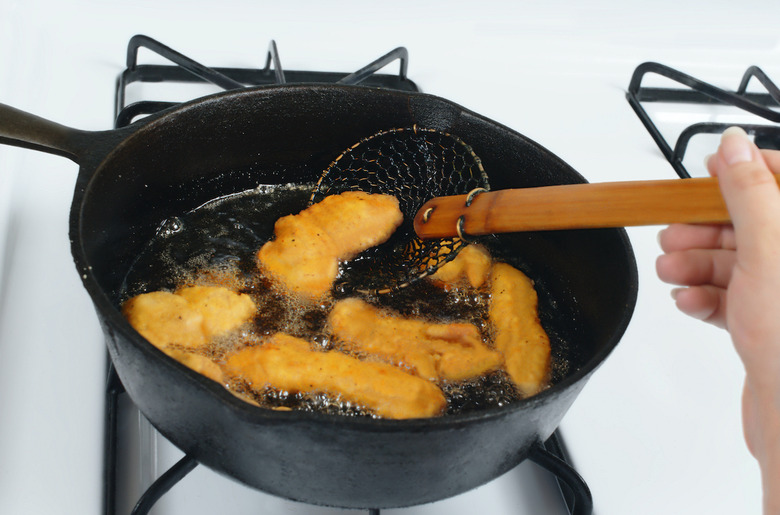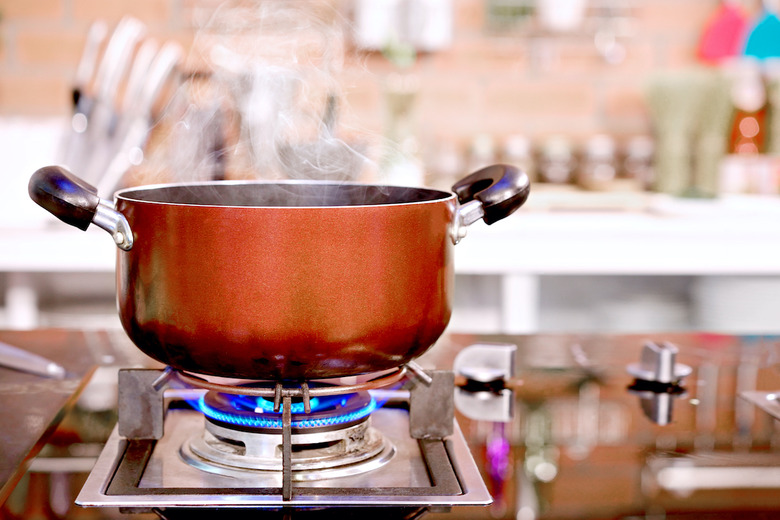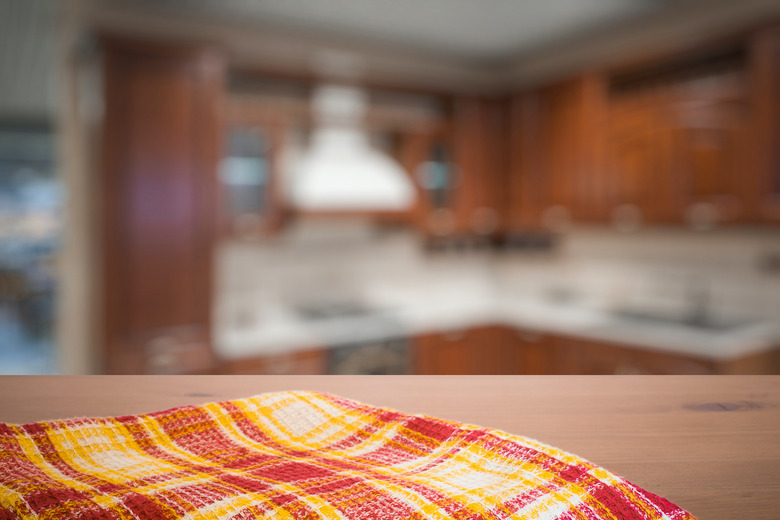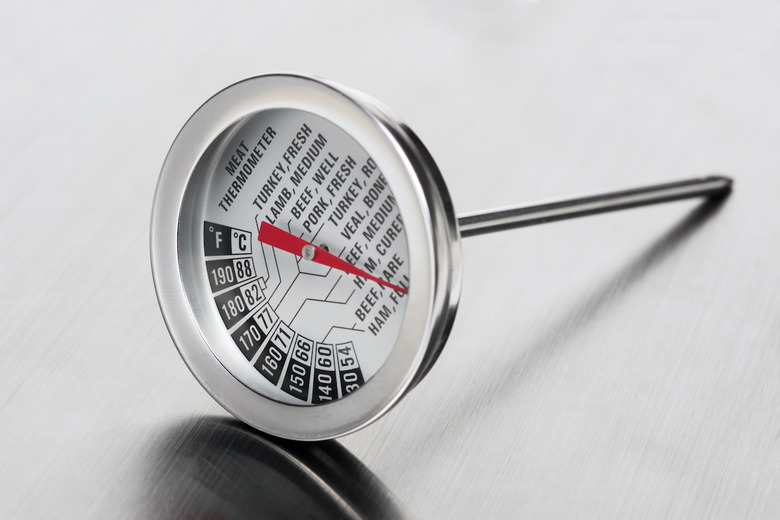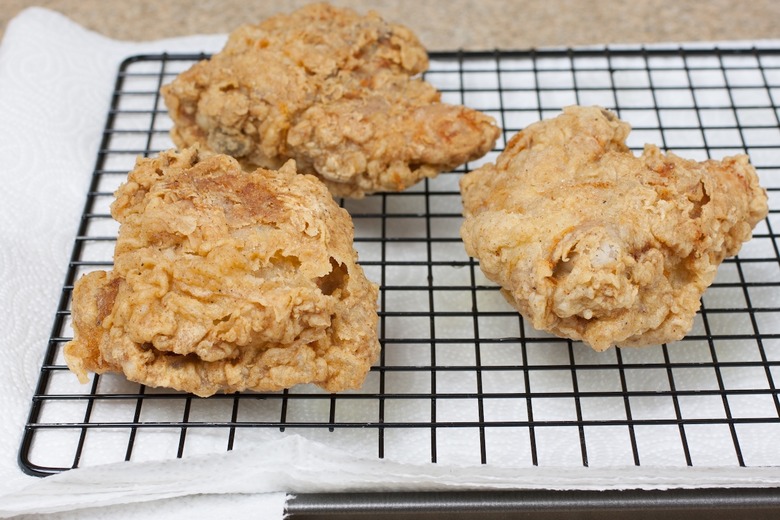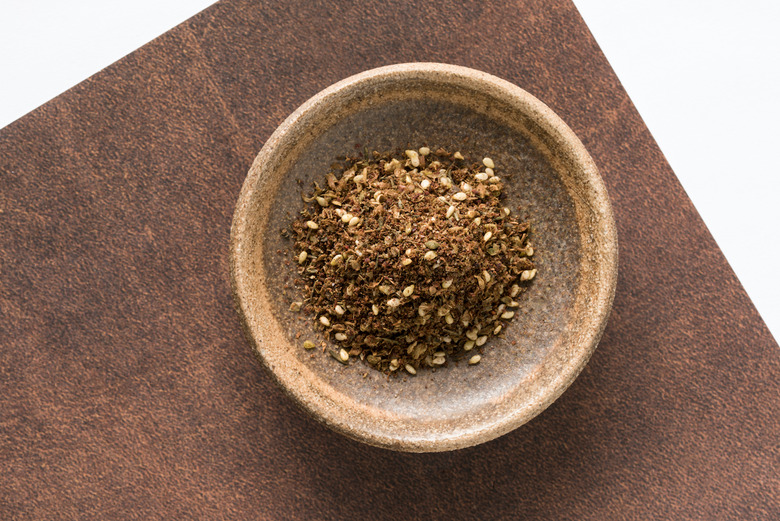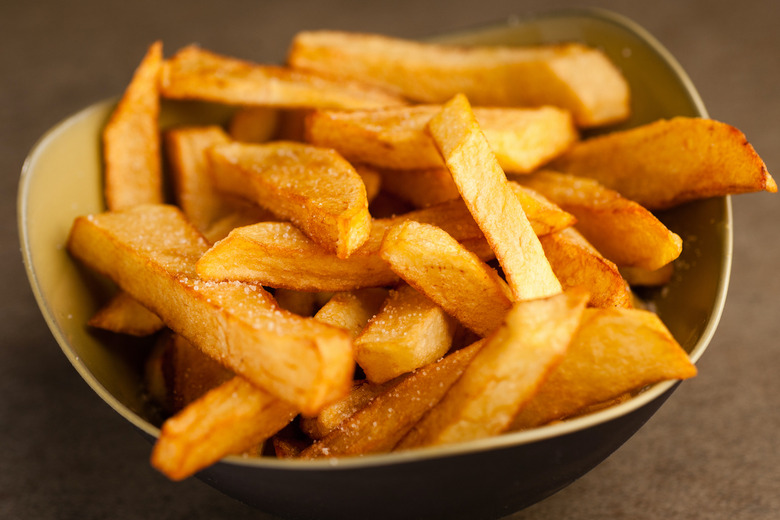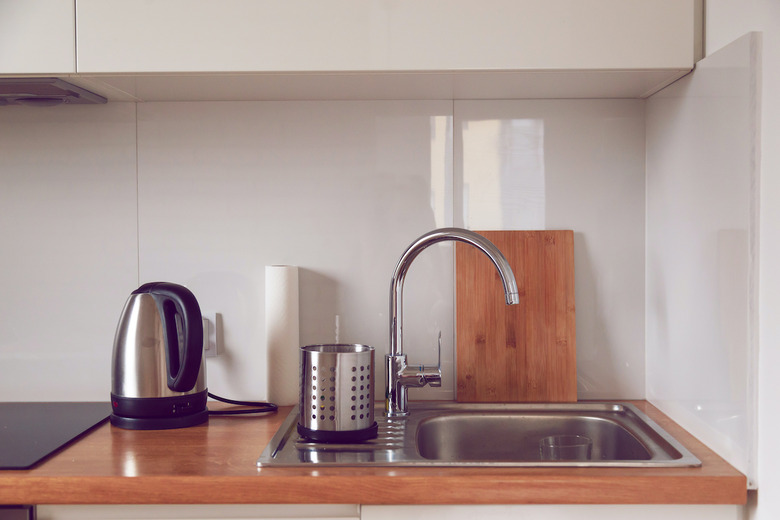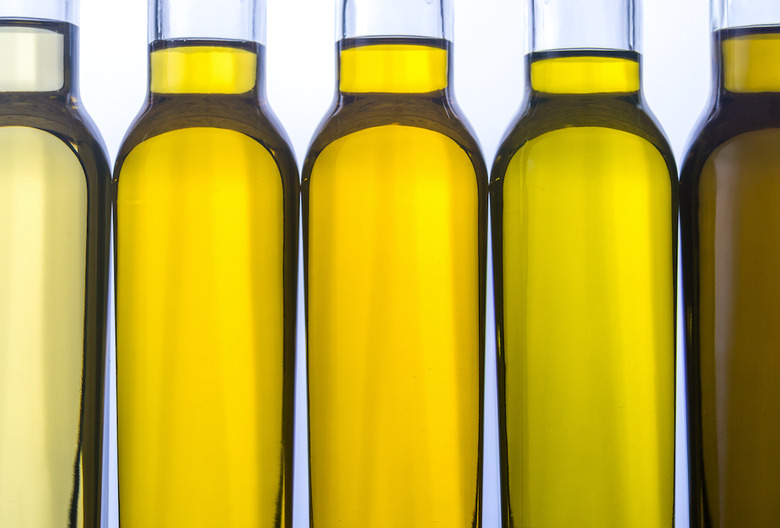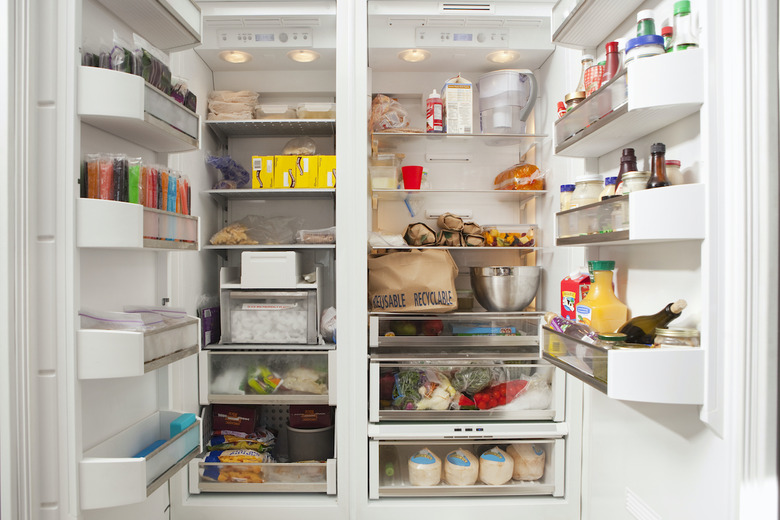How To Fry Food At Home
We may receive a commission on purchases made from links.
Fried food might not be the best for you, but it's a much-loved cuisine in the American diet — and that's a fact. There's something about a near-perfect fried chicken sandwich from an awesome food truck, or your usual order at an all-time favorite food court restaurant. Here's the thing: You don't have to leave your kitchen for the crispy, crunchy, greasy eats you crave. With a few pointers, you'll have your own perfectly fried foods at home in no time.
Frying is when you fully or partially submerge food into a bath of hot oil or fat at 350 to 375 degrees, though temperature may vary by recipe. The end result is a golden-brown, crisp outer layer and moist, flavorful interior. Think french fries, fried chicken and churros.
What can you fry?
You can fry pretty much anything. Commonly fried foods include shrimp, chicken, clams, pickles, fries, doughnuts, churros and battered things like corn dogs.
Choose the right oil
Good frying oils are neutral-flavored with a high smoke point, which is the temperature at which the oil starts to burn. These are typically saturated fats. For the best results, go for peanut oil, lard, soybean oil, canola oil, sunflower oil or shortening.
Choose the right cookware
Not choosing the right oil is just one cooking mistake you need to stop making when frying. Opt for a heavy cast-iron pot, Dutch oven or wok that can fit all of the ingredients with extra room. If you don't own any of those, any deep pot will do.
Use a thermometer
A thermometer will help ensure that your oil is at the correct temperature. If you don't have one, here's a hack: stick a wooden spoon handle in the oil. When the oil starts to bubble around the spoon, it's ready. If your oil is too hot, it'll burn the surface of your food. If it's not hot enough, it'll make your food soggy and greasy.
Don’t crowd
If you're frying many different pieces like when making chicken nuggets or other fast food favorites, don't put them all in at the same time. Crowding can result in a temperature drop, and the grease will be absorbed into the food, making everything oily and mushy.
Cut food into similar sizes
Let's say you're making french fries. Make sure you cut all of the potato pieces into similar sizes so that everything fries evenly at the same rate. If some pieces are much larger than others, they will likely be undercooked. Cutting everything correctly is one of the best cooking lessons we learned from our parents.
Wear protective clothing
If you're worried about splashing oil burning your skin, wear long sleeves to protect your arms, but nothing too loose. You don't want your sleeves to dip into the oil or catch onto anything nearby. An apron is a piece of clothing that's never out of style and will help protect your clothes from hard-to-remove stains too.
Use a splash guard
If you're really worried about the oil splatter, you can buy a splash guard. There are some made from stainless steel and others made from silicone that you can easily find on Amazon.
Don’t overfill your vessel
Don't fill your pot more than halfway with oil. When you add food, it will displace the oil, which could make it overflow and cause a fire.
Pat down meat
One of the top ways to cook meat correctly is to pat it dry before frying. If you don't pat down meat before you dredge it, you won't get an even coating of flour. It won't properly stick either. And when you dip it in the oil, it'll make it splatter like crazy.
Shake off excess flour
Dip your meat in flour and shake off any excess so your egg, flour and breadcrumb mixture sticks together seamlessly.
Let your meat sit in the flour
If you're cooking meat, let it sit in the flour for a few minutes. This allows the flour to pull out any moisture that might still be trapped at the surface and stick nicely.
Use two hands to dredge
If you've ever used just one hand to dredge, you know it's messy. To avoid a build-up of gunk on your fingers, use one hand for flour before it goes into the egg, and the other for when you need to transfer the item from egg to breadcrumbs to a tray to await frying.
Double dredge
For extra crispy fried chicken, for example, double dredge your poultry. How? Just repeat the dredging process twice before cooking.
Hold your food before releasing it
You may be inclined to drop your food directly into the pot, but if you hold it under the oil with tongs for just five seconds before releasing it, it will prevent it from sticking to other foods. This also helps seal the batter.
Leave it alone once it’s in the oil
The more you touch something once it's in the oil, the more likely it is for the breading to fall off. At the same time, perhaps you have two pieces of chicken in the pot; it's important that they don't touch each other.
Use a skimmer
A skimmer, also called a spider, is a tool with a small mesh basket at the end of the handle. It can be used to add or remove foods into and out of the oil, like a makeshift fryer basket you'd see in the kitchen of a restaurant. You could also use stainless steel tongs or a slotted spoon.
Don’t leave your pot unattended
According to the National Fire Protection Agency, unattended cooking is the leading cause of home fires and casualties. If there's a small grease fire, turn off the burner and smother the flames by putting a lid on the pot. If you have any doubts about whether or not you'll be able to safely fight the fire, leave your home, close the door behind you and call 911.
If there's a fire, never try to ...
Never use water to put out a fire, because it contains oxygen, which feeds flames. Don't try to move the pot outside either. The oil could spill and burn you or land on other flammable objects. Don't swat the fire with a towel, or smother the pot with a wet dishrag. Both methods only provide the inferno with more oxygen, which gives it more power.
Check the temperature of meat
Time to break out that thermometer again. If you're frying poultry, the internal temperature should be 165 degrees Fahrenheit. Fish and shellfish should be 145 degrees Fahrenheit.
Use a cooling rack
Place a cooling rack in a baking sheet to let excess oil drain from the food you fried. It can also be drained by lining a baking sheet with paper towels, but your food might cool unevenly and be soggy on the bottom.
Season immediately
If you season your food immediately after it comes out of the oil while it's still hot on the drying rack, it'll lock in the flavor.
Eat while it’s hot
Definitely wait long enough so that you won't burn your mouth when you take a bite, but fried food is best eaten while it's still hot. The longer you wait, the more time the moisture from the inside has to penetrate the surface and make it soggy.
Don’t pour oil down the drain
Frying oil can clog pipes and damage plumbing. To properly discard it, first let it cool to room temperature, and then pour it in some sort of disposable container, like an empty can or milk carton, and then throw it in the trash.
Reuse oil
Instead of throwing it away, you can reuse frying oil as long as it's light in color. Once it's cool, strain out any crumbs through a cheesecloth or sieve into a sealed and light-proof container for up to three months in the refrigerator. If the oil is clouded, foamy or starts to stink, toss it out.
Refrigerate ASAP
Throw your leftovers in the fridge within two hours of frying, or one hour if the air temperature is above 90 degrees Fahrenheit. Cooked food left at room temperature for longer can breed harmful bacteria and potentially lead to illness. If you've had ingredients lurking in the shadows of your icebox, play it safe with these guidelines on how long meat and other foods last in the fridge and freezer.
More from The Daily Meal:
How to Make Your Food Last Longer
Cooking Tips We Learned From Our Parents
20 Brilliant Meal Prep Hacks That Will Save You Tons of Time
